Mel Kiper Jr. handles the draft grades for us at ESPN every year, but I've gone through and identified the best pick for each of the 32 teams this year.
"Best pick" does not necessarily mean "best player." I'm taking into account team needs, the value a player presented in comparison to my board and any trades related to the pick.
Note: Teams are listed in alphabetical order. To quickly get to your team, click on the links below.
ARI | ATL | BAL | BUF | CAR | CHI | CIN | CLE | DAL | DEN | DET | GB | HOU | IND | JAC | KC | LAC | LAR | MIA | MIN | NE | NO | NYG | NYJ | OAK | PHI | PIT | SF | SEA | TB | TEN | WAS
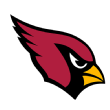
Arizona Cardinals
Dorian Johnson, G, Pittsburgh (pick No. 115)
Guard was a big need for the Cardinals after they lost Earl Watford in free agency and saw Evan Mathis retire. Arizona selected Johnson with the additional fourth-round pick received from Carolina to move down 21 slots in the third. Johnson is a plug-and-play starter for Arizona: He's an elite run-blocker who has the arm length to get even better in pass protection. Johnson finished his career with 40 consecutive starts and took his game to another level in 2016.

Atlanta Falcons
Duke Riley, ILB, LSU (pick No. 75)
The Falcons traded back from pick No. 63 to 75, receiving two additional fifth-round selections in the process, which turned into CB Damontae Kazee (a terrific value) and RB Brian Hill, a player I saw up close at Wyoming. Not to be overlooked, Atlanta selected Riley with the 75th pick. He'll pair with his former LSU teammate Deion Jones, who made a big impact in 2016 as a rookie. Although Riley isn't quite as explosive as Jones, he displays quick redirect skills and the ability to get sideline-to-sideline in a hurry; he recorded the second-fastest 40 time among linebackers at the combine. I love what the Falcons are doing on defense, adding even more speed to the fold. Their first-round pick, Takkarist McKinley, has a really quick first step off the edge and is a good complement to Vic Beasley Jr. in Atlanta.

Baltimore Ravens
Tyus Bowser, OLB, Houston (pick No. 47)
The Ravens did a great job of finding value in Rounds 2 and 3. They got Bowser, our 33rd overall player, with the 47th pick and added Michigan DT Chris Wormley and OLB Tim Williams, both lower than we had them ranked. Although I like the idea of unleashing Williams in this scheme as a situational pass-rusher, Bowser is a better value and a more complete player. He's a naturally athletic player, showing the first-step quickness (1.59 10-yard split) to threaten off the edge as a pass-rusher. As Terrell Suggs, 34, nears the end of his career, Bowser gives the Ravens a high-upside player who will take to hard coaching.
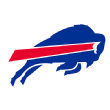
Buffalo Bills
Nathan Peterman, QB, Pittsburgh (pick No. 171)
What a steal for the Bills: I had Peterman ranked as my No. 4 QB and 69th overall prospect, and Buffalo got him in the fifth round. He's the most pro-ready of all the quarterbacks in this class. Peterman throws with great anticipation and showed the ability to handle a lot of pre-snap responsibilities in Pitt's scheme. I was on the sideline when Peterman went into Death Valley and threw five touchdowns to hand eventual national champion Clemson its only loss of the season. Peterman played with great poise in that hostile atmosphere. The one negative with this fit is Peterman's lack of arm strength in the windy AFC East. But he gives the Bills a reliable backup in the short term and a potential starting option in the long term if they want to move on from Tyrod Taylor in the coming seasons.
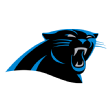
Carolina Panthers
Christian McCaffrey, RB, Stanford (pick No. 8)
The Panthers entered the draft needing an infusion of youth in the backfield and more weapons for Cam Newton in the passing game. In McCaffrey, they're getting a runner who shows the ability to get in and out of his cuts very quickly and one of the most polished receiving RBs I've ever evaluated. McCaffrey has a really high floor. The Panthers also added another versatile weapon in the second round (Ohio State WR/RB Curtis Samuel). Offensive coordinator Mike Shula has the personnel to get really creative on offense with Newton. The question is simply whether he can put it together.
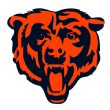
Chicago Bears
Adam Shaheen, TE, Ashland (pick No. 45)
The Bears needed an infusion of youth at tight end, with Zach Miller turning 33 this season and coming off an injury. Shaheen, who ran an impressive 4.79 40 at 278 pounds, has the tools to develop into a difference-making starter in the NFL. What I liked most about this move: The Bears could've taken Shaheen at pick No. 36, but they traded down to 45, picking up an extra fourth-rounder (RB Tarik Cohen) and a 2018 fourth.

Cincinnati Bengals
Carl Lawson, DE, Auburn (pick No. 116)
The Bengals needed to find an edge rusher to pair with Carlos Dunlap. I don't know if Lawson is going to be a full-time player for Cincy, but when he plays, he's going to give maximum effort and make some splash behind-the-line-of-scrimmage plays. Lawson comes with durability concerns (multiple knee surgeries and a shoulder issue), but I was blown away with his passion for the game when we met earlier this year. Lawson plays with an excellent motor, is stout against the run and has a strong combination of quickness and power as a pass-rusher. If he can stay healthy, the Bengals got a great value here.

Cleveland Browns
David Njoku, TE, Miami (Fla.) (pick No. 29)
It goes without saying that No. 1 overall pick Myles Garrett could also be the pick here. Cleveland did well to not overthink it, taking the clear-cut best player on the board. I thought the Browns should've picked Njoku with the 25th overall pick, but they traded back up to No. 29 to nab the explosive tight end. Njoku has the speed (4.59 40) to stretch the field, along with the leaping ability (40-inch vertical) to make big plays down the field. He has one of the highest overall ceilings in this class, and those are exactly the kind of players the Browns should be drafting as they rebuild their roster.
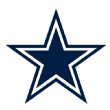
Dallas Cowboys
Jourdan Lewis, CB, Michigan (pick No. 92)
Lewis fell to the third round with off-the-field issues lingering, but we had an early second-round grade on the Michigan product, and the Cowboys got him in the bottom of the third. Lewis has a chance to be the best nickel/slot CB in this class, and the Cowboys really needed corners after they lost Brandon Carr and Morris Claiborne in free agency. Lewis is on the smaller side (5-foot-10¼, 188 pounds), but you'd never know it by watching him fill against the run. In coverage, he gave up less separation than any cornerback I watched on tape in this draft. The Cowboys upgraded their secondary on Day 2 of the draft, selecting Lewis and Colorado CB Chidobe Awuzie, both of whom made my 2017 All-Tape Team.
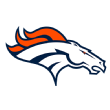
Denver Broncos
Jake Butt, TE, Michigan (pick No. 145)
The Broncos landed Butt as part of a trade down in the fourth round. They used the extra fifth-round pick acquired in that deal to move up to get one of my favorite players in the draft, Georgia WR/RS Isaiah McKenzie. This was terrific value for Butt. The only reason he fell to the fifth round is the torn ACL he suffered in the Orange Bowl. Make no mistake: When healthy, Butt can be a Tyler Eifert-type playmaker in the NFL. He has the size, agility and route-running skills to consistently get separation from coverage. When the ball comes his way, he shows really strong hands, particularly when catching the ball in traffic. Butt fills a huge need for the Broncos: They finished 31st in the league last season, with only 53 catches from tight ends.
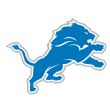
Detroit Lions
Teez Tabor, CB, Florida (pick No. 53)
Tabor looks like a first-rounder on tape, showing easy change-of-direction skills. He has a knack for finding the ball too, with 28 pass breakups and nine interceptions in his Florida career. Tabor looked like a first-rounder ... until he ran a 4.62 40 at the combine. I don't always buy into workout numbers, but the 40-yard dash really matters for cornerbacks, and that's a red-flag number. So how am I so positive about this pick? Lions defensive coordinator Teryl Austin's plays a zone-heavy scheme, which is the perfect fit for a player such as Tabor, who is instinctive but lacks top-end speed. Tabor's playmaking ability will be welcome on a Lions defense that ranked 28th in takeaways.
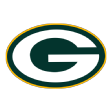
Green Bay Packers
Kevin King, CB, Washington (pick No. 33)
The Packers could've justified taking King with their original first-round pick (No. 29), but they showed a great feel for the draft board by moving down four picks and still getting their guy. (The extra fourth-round pick they acquired in the deal turned into LB Vince Biegel). Green Bay ranked 31st against the pass last season and got exposed by the Falcons' Matt Ryan and Julio Jones in the playoffs. Injuries obviously played a huge role. With his long arms (32 inches), the 6-foot-3 King is a perfect fit for Dom Capers' press-man scheme. His stock really started to rise after the combine, where he showed the speed (4.43 40), agility (3.98 short shuttle and 6.56 3-cone) and lower-body explosion (39-inch vertical) to hang with receivers on the perimeter.

Houston Texans
Carlos Watkins, DT, Clemson (pick No. 142)
Watkins was unbelievable in the College Football Playoff National Championship against Alabama. In that game, the coaches didn't ask him to do a lot of twisting and stunting; they just allowed him to play, and they got a really disruptive player. Because of his relentless motor, I think Watkins is going to way out-perform where he was drafted. We had him as the 104th-ranked player in the class, and the Texans got him near the bottom of Round 4.
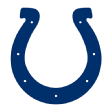
Indianapolis Colts
Quincy Wilson, CB, Florida (pick No. 46)
I debated heavily here between safety Malik Hooker, whom the Colts got at a great value in the first round (No. 15). But because Indy had a much bigger need at corner, I went with Wilson. Wilson was a fringe first-rounder on our board (No. 31 overall), and the Colts selected him midway through the second. At 6-foot-2 and 211 pounds, Wilson is at his best when he's playing press coverage. That makes him a perfect fit for Ted Monachino's scheme, which requires big, physical corners who thrive in press-man. The Colts had only eight interceptions last season, tied for second-worst in the NFL, so it's no coincidence that Ballard targeted Hooker and Wilson in the first two rounds. They both have great ball skills.

Jacksonville Jaguars
Leonard Fournette, RB, LSU (No. 4 pick)
Tom Coughlin is running the show in Jacksonville, and you can tell. This pick is all about taking the ball out of QB Blake Bortles' hands, playing to the team's strength on defense and slowing the game down. No player in this draft can help you more in this role than Fournette. He has a rare combination of size, speed and power (4.51 40 at 240 pounds). Fournette can also create yards on his own, which will be an important trait running behind a Jaguars offensive line that's still a work in progress.
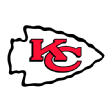
Kansas City Chiefs
Kareem Hunt, RB, Toledo (pick No. 86)
The Chiefs traded up to get Hunt, but RB was their biggest need entering the draft, and Hunt is a complete back. With a thick lower body, Hunt creates a bunch of yards on his own, regularly bouncing off tackles. He also has the agility to make defenders miss, and coach Andy Reid will find a way to utilize that skill set by getting him in space in the passing game. Hunt lacks top-end speed, but he's otherwise a really complete player.
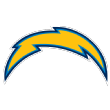
Los Angeles Chargers
Forrest Lamp, G, Western Kentucky (pick No. 38)
I had Lamp rated as the top offensive lineman in the draft, and the Chargers, who had needs at both guard and tackle, saw the Western Kentucky product fall to them in the second round. Lamp plays with great toughness, and he dominated Alabama pass-rushers Tim Williams and Ryan Anderson last season. He's good athlete and should be a plug-and-play starter at guard in Los Angeles. The Chargers also found good value by drafting Desmond King (our No. 77 player) with the 151st pick.

Los Angeles Rams
Cooper Kupp, WR, Eastern Washington (pick No. 69)
Before Day 2, I had communication with two teams wondering where Kupp was going to be selected. Les Snead and staff did a good job here of knowing the board in this draft. They moved back in the second round and still got the player they wanted (TE Gerald Everett). Kupp was a hot item in the third, but the Rams decided against trading up for him, and it worked. He doesn't give the Rams the No. 1 wide receiver they sorely need, but he provides QB Jared Goff with a reliable weapon underneath. The Rams ranked 25th in the NFL last season, with a 4.8 drop percentage. Kupp should help in that regard. He has soft, reliable hands and consistently plucks the ball away from his frame.
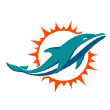
Miami Dolphins
Charles Harris, OLB, Missouri (pick No. 22)
Harris came off the board right around where we had him ranked (No. 18). There was a lot of pre-draft chatter about him going higher (between 10-20), and the Dolphins did well to stand pat and let Harris drop to them instead of trading up. This was a position Miami needed to address with Cameron Wake now 35 years old. I don't know if Harris is going to be an immediate starter, but he has a lot of tools to be molded. It will be good for his development to be around a guy such as Wake, who keeps himself in great shape. Isaac Asiata was also a good value for the Dolphins in the fifth round.

Minnesota Vikings
Dalvin Cook, RB, Florida State (pick No. 41)
Cook fell to the second round amid concerns over his durability and whom he surrounds himself with off the field. But the Vikings did well to take a chance on Cook (our No. 17 overall player) in the second round, even if they had to trade up to do it. (GM Rick Spielman was able to recoup the fourth-rounder given up in the Cook trade later in a different deal.) Minnesota averaged a league-low 3.17 yards per carry last season, but Cook, who is a true three-down back, should help rectify that. He had 18 touches of 25 or more yards in 2016, tied for first among all Power 5 RBs.
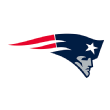
New England Patriots
Derek Rivers, OLB, Youngstown State (pick No. 83)
The Patriots had only four draft picks, but don't forget: They traded picks to get veterans such as WR Brandin Cooks, pass-rusher Kony Ealy and TE Dwayne Allen. After trading away Chandler Jones and Jamie Collins in a matter of seven months last year, outside linebacker was easily the Patriots' biggest need entering the draft. Rivers is a perfect fit for the Patriots' culture: He has no off-the-field baggage, loves the game and is a vocal leader in the locker room. He comes with loads of athletic upside too, after dominating small-school competition (52 tackles for loss, 38 sacks) and putting on a show at the NFL combine (top-five results among D-linemen in the 40, bench press, vertical jump and 3-cone). Rivers gives the Patriots a much-needed infusion of youth at outside linebacker as Rob Ninkovich enters the final year of his contract.
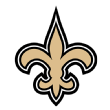
New Orleans Saints
Marshon Lattimore, CB, Ohio State (pick No. 11)
The Saints finished 32nd in the NFL in passing defense in 2016 ... and 31st the season before, so having the draft's top man-to-man cover corner fall to them at pick No. 11 had to be a great feeling inside the Saints' draft room. An explosive athlete (4.36 40), Lattimore has ideal size (6-foot, 193 pounds), and he gives up minimal separation when playing shadow coverage. I also really like the value New Orleans got with RB Alvin Kamara (our No. 40 player; No. 67 pick), but they traded up to get him and gave up a 2018 second-rounder.

New York Giants
Evan Engram, TE, Ole Miss (pick No. 23)
The Giants ranked last in the NFL last season in yards per catch from tight ends (7.7 YPC). Engram will change that in a hurry. At 6-foot-3 and with 4.42 speed, Engram is a tight end built for the NFL in 2017 -- like the Redskins' Jordan Reed but more athletic. He's a perfect fit in a Giants offense that likes to spread defenses, thanks to his elite route-running ability.
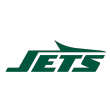
New York Jets
Jamal Adams, S, LSU (pick No. 6)
The Jets were the biggest beneficiaries of a wacky top 10 picks, as Adams (our No. 2 overall player) fell into their laps at the sixth overall pick. Adams is one of the few culture-changing players in this draft, and that's exactly what the Jets need on defense. He has the highest floor of any player in the draft and is ready to be a big-time contributor from Day 1 in New York.
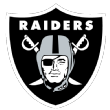
Oakland Raiders
Obi Melifonwu, DB, Connecticut (pick No. 56)
My guess is that the Raiders are viewing the 6-foot-4 Melifonwu as a guy they're going to try at corner and see if it works. If it doesn't, they'll try him at safety. On early downs, he will be effective against the run. Because of his freakish athleticism (4.40 40 at 224 and an 11-9 broad jump), Melifonwu gives the Raiders a unique matchup piece on defense. He can cover the likes of Travis Kelce, Demaryius Thomas and Hunter Henry inside the AFC West.

Philadelphia Eagles
Mack Hollins, WR, North Carolina (pick no. 118)
In Joe Douglas' and Andy Weidl's first draft, it was very important for them to find building-block players. Their first two picks -- DE Derek Barnett and CB Sidney Jones -- fit that mold. They both have outstanding football character. Hollins, a former walk-on, also embodies the type of player the Eagles are looking for, and he was a great value. Yes, he has some durability concerns, but at 6-foot-4 and 220 pounds with big-play ability, Hollins was a late-second/early-third-round talent, and the Eagles got him at No. 118 overall. Hollins plays like an absolute maniac on special-teams coverage and will at the very least be a good red zone threat.

Pittsburgh Steelers
Joshua Dobbs, QB, Tennessee (pick No. 135)
Dobbs has a chance to be a good starter in this league, and landing with a team such as Pittsburgh will only increase his chances. Dobbs has a live arm and the ability to throw with anticipation, and his excellent mobility comes in handy when he needs to extend plays. I'm really impressed with Dobbs' makeup; he juggled aerospace engineering classes and being a starting quarterback in the SEC. Imagine what he'll be able to do as he focuses solely on football. Dobbs is the perfect quarterback for the Steelers to draft and learn from Ben Roethlisberger -- and the team got tremendous value in getting him at pick No. 135 (we had him ranked 63rd overall).
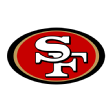
San Francisco 49ers
Solomon Thomas, DL, Stanford (pick No. 3)
The analysis of this pick is two-fold. First, Thomas is one of the most complete players in this draft, possessing an outstanding combination of size, quickness and power. Second is the trade GM John Lynch manufactured as part of the pick. Lynch could've easily selected Thomas No. 2 overall, but Lynch traded down one pick with the Bears and got a ransom in return: third- and fourth-round picks in 2017 and an additional third in 2018. They used the fourth-rounder this year to trade up and get ILB Reuben Foster (our No. 8 overall player) with the 31st pick. Then they traded the third-rounder received in the initial deal to the Saints for a 2017 seventh (DB Adrian Colbert) and 2018 second. That means the 49ers got two top-10 players in this class and 2018 second- and fourth-rounders. This is the most ridiculous series of trades I've seen in all my years of doing this.

Seattle Seahawks
Malik McDowell, DT, Michigan State (pick No. 35)
I had been hyping this fit for a while: It's the perfect spot for a player such as McDowell, who has limitless potential and raw tools but did not always give the best effort while at Michigan State. Pete Carroll's culture of competition will get the most out of McDowell. A very underrated part of this pick: The Seahawks could've justified taking McDowell with their original first-round pick (No. 26 overall). But they traded down three separate times, accumulating additional third-, fourth-, sixth- and seventh-round selections in this year's draft ... and still got McDowell. Those additional picks turned into S Delano Hill, S Tedric Thompson, S Michael Tyson and RB Christopher Carson. That's a great job by GM John Schneider of maneuvering the draft board and still getting an impact player.

Tampa Bay Buccaneers
O.J. Howard, TE, Alabama (pick No. 19)
I thought tight end would be in play for the Buccaneers early in the draft, but I never believed the best player at the position would fall all the way to pick No. 19. He was the seventh overall player on my board. Jameis Winston should be thrilled with this pick: Howard gives the QB a legit game-breaker. The Buccaneers have done a great job of upgrading their passing game this offseason by drafting Howard and signing free-agent WR DeSean Jackson.
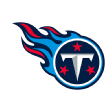
Tennessee Titans
Corey Davis, WR, Western Michigan (pick No. 5)
You might think this was a reach, but let me explain. With the Titans owning the No. 5 and No. 18 picks, the first round was always about getting the right pairing between cornerback and wide receiver, their two biggest needs. Picking Davis over, say, CB Marshon Lattimore at No. 5 was the safer route, given the depth of this cornerback class and how the wide receiver group fell off a bit after the top three. It ended up being the correct calculation because those top three WRs all ended up off the board by the ninth pick. Selecting Davis at No. 5 freed the Titans to take a corner at pick 18. They had a bunch of good ones to choose from -- Adoree' Jackson, Tre'Davious White and Quincy Wilson -- and they opted for Jackson. GM Jon Robinson was able to fill two big needs with good players because he understood how the board would fall and who'd be left when he was picking for the second time in Round 1.

Washington Redskins
Jonathan Allen DL, Alabama (pick No. 17)
Allen fell further than he should have, even when you consider the concerns about his athleticism and long-term health (shoulder). His tape is pristine, and he comes with outstanding intangibles. The Redskins had a massive need for a player such as Allen, one of the most disruptive interior pass-rushers in this class and a stud run defender. He comes with tremendous experience and will be an impact player from Day 1 in Washington.
